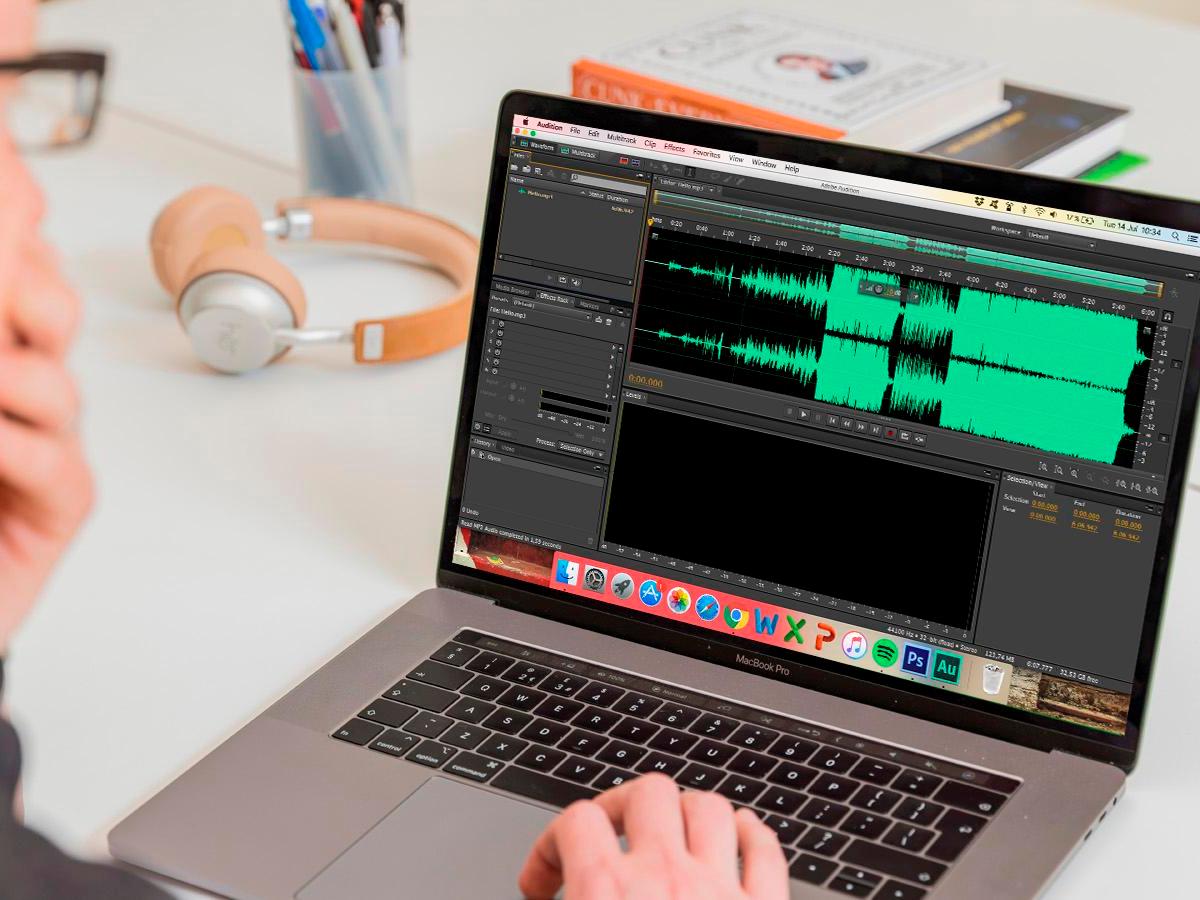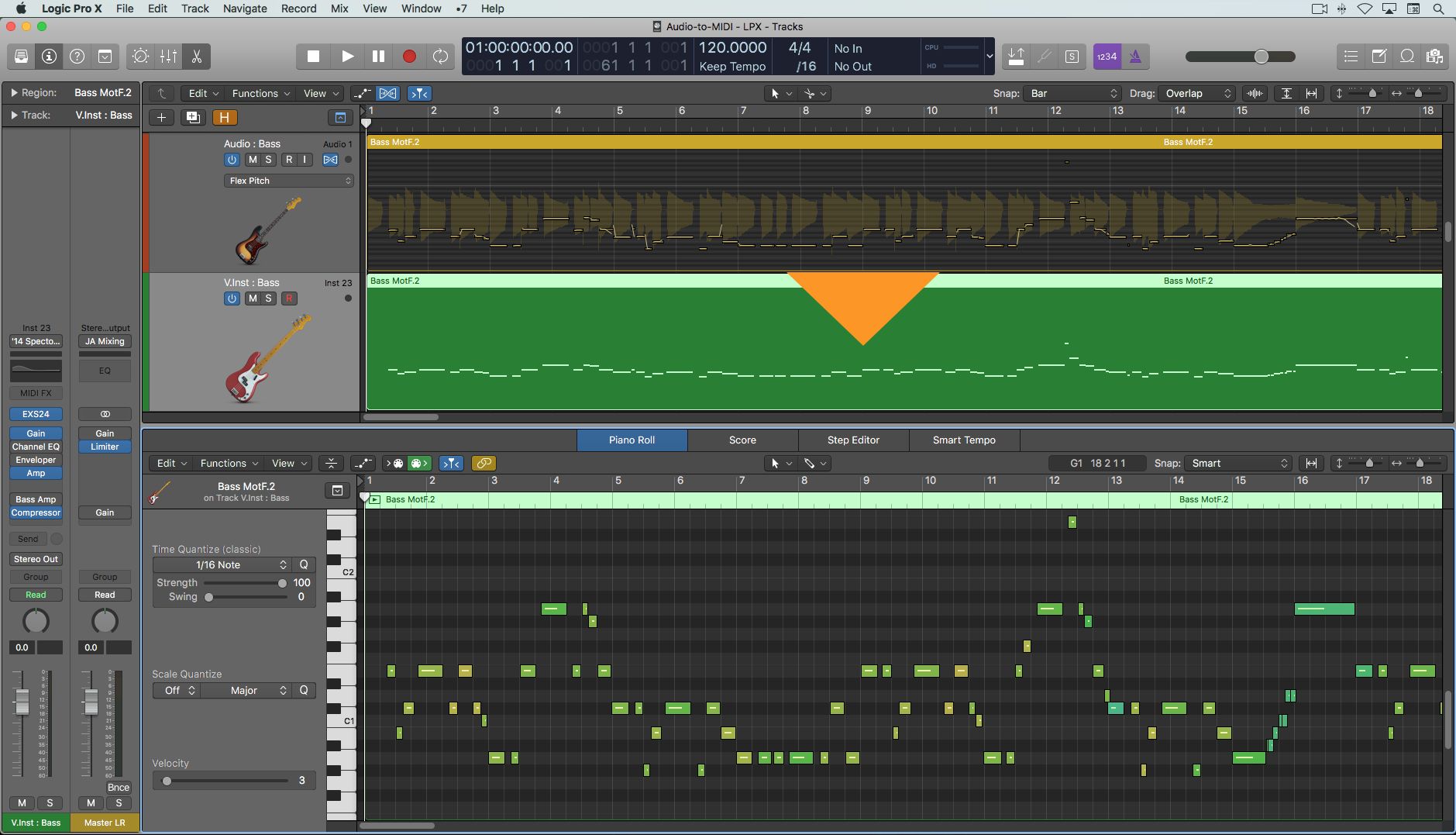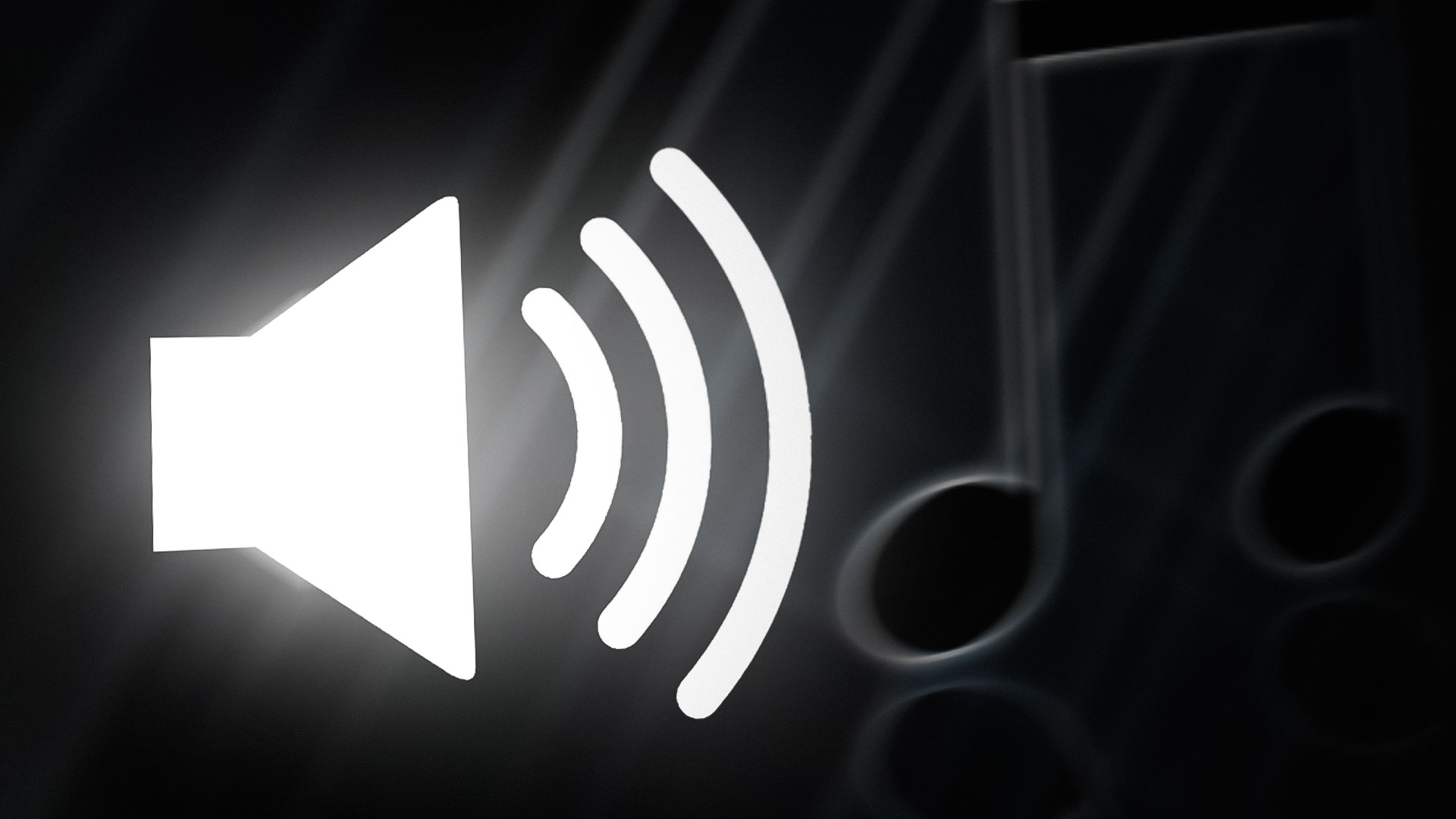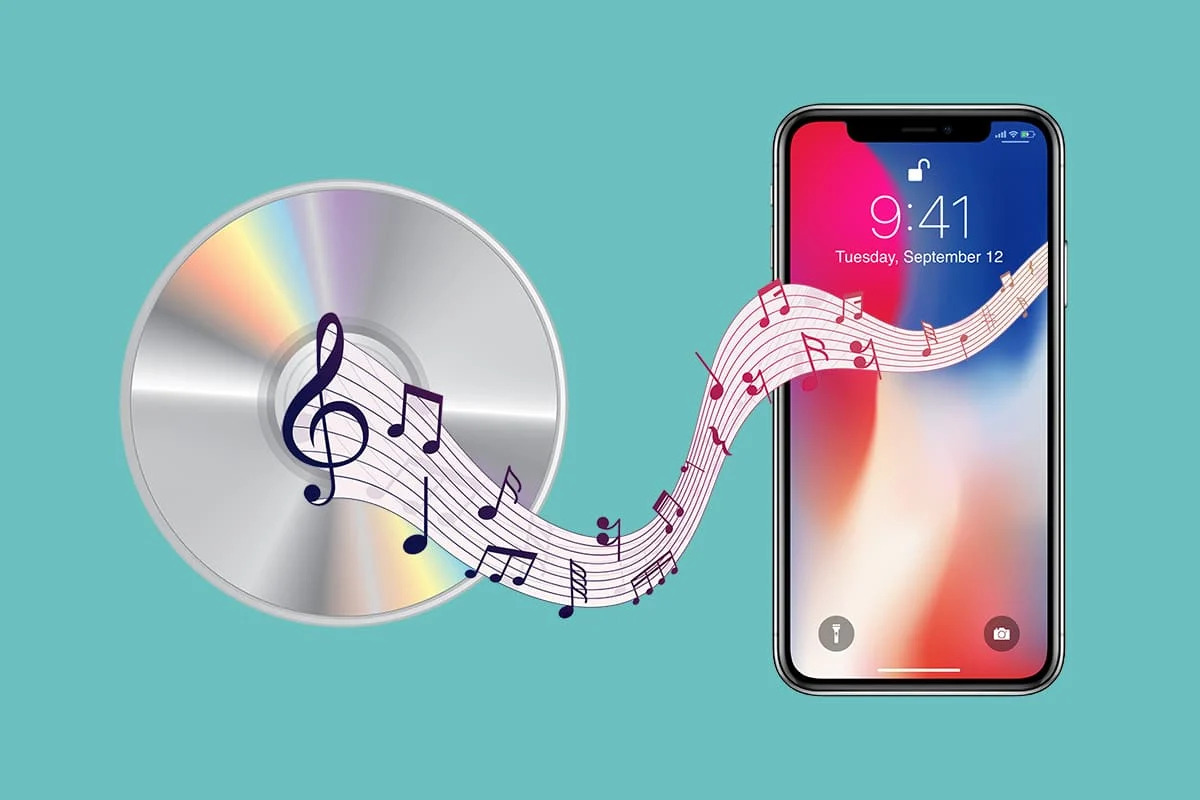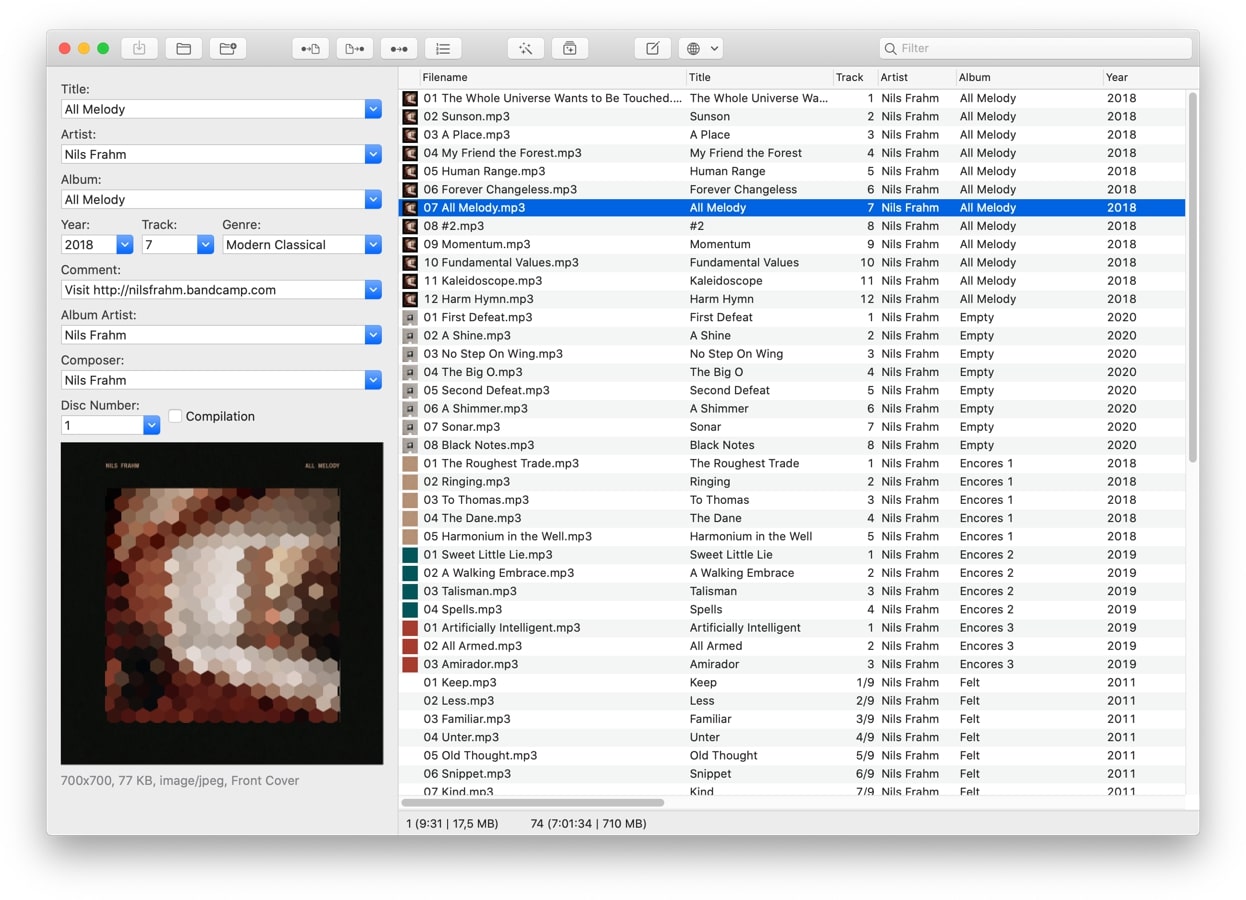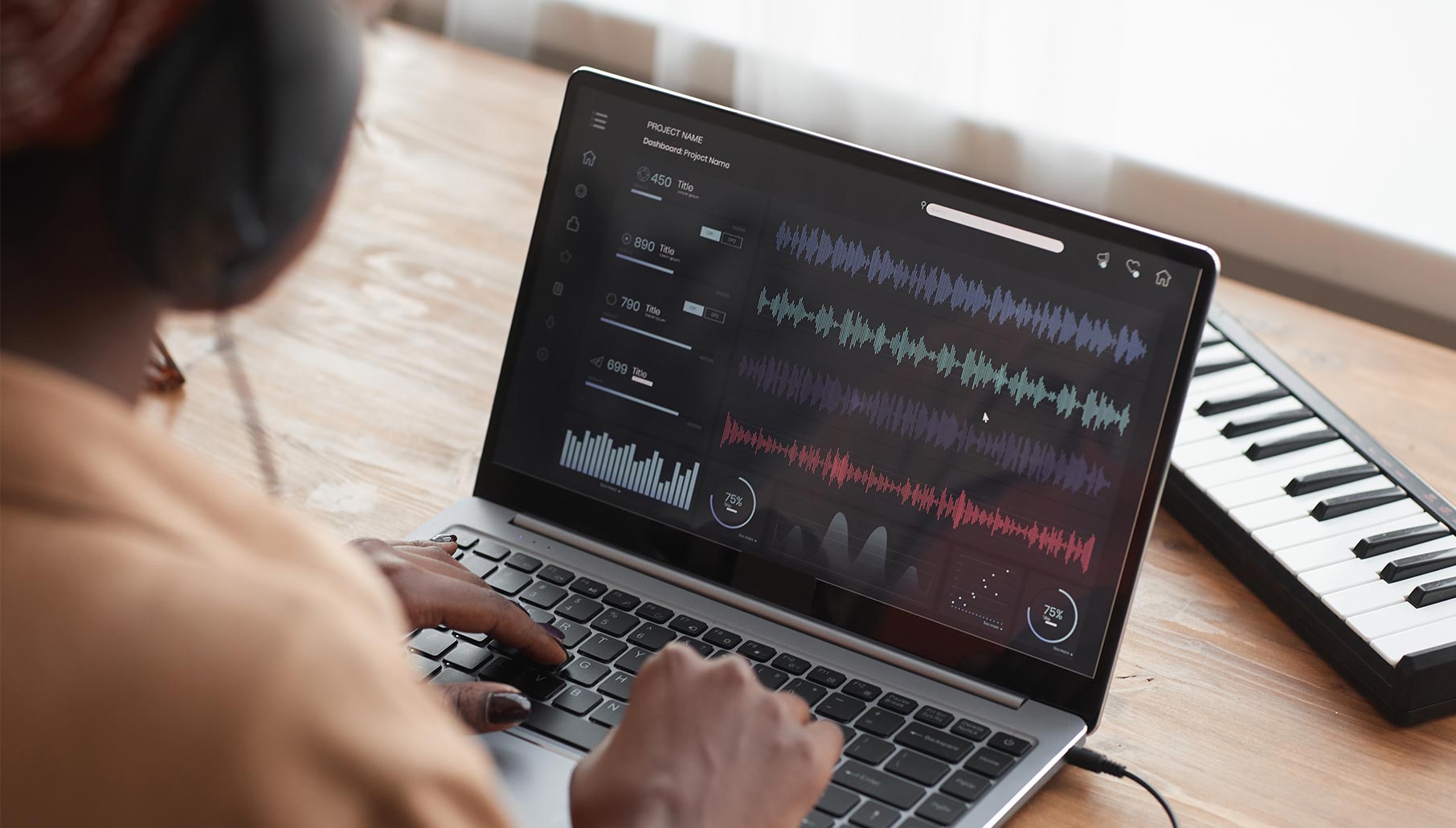Home>Production & Technology>MIDI>How To Make An MP3 To MIDI File


MIDI
How To Make An MP3 To MIDI File
Modified: March 9, 2024
Learn how to convert MP3 to MIDI with our easy step-by-step guide. Discover the best tools and tips for creating MIDI files from audio.
(Many of the links in this article redirect to a specific reviewed product. Your purchase of these products through affiliate links helps to generate commission for AudioLover.com, at no extra cost. Learn more)
Table of Contents
Introduction
In the realm of digital music, the MP3 and MIDI file formats reign as two prominent players, each with its own distinct characteristics and applications. While MP3 files are widely known for their compressed audio format, making them ideal for storing and playing music on various devices, MIDI files offer a different dimension by representing musical data in a versatile and lightweight format. Understanding the differences and capabilities of these file types is crucial for anyone seeking to harness the full potential of digital music.
MP3, short for MPEG-1 Audio Layer 3, has become synonymous with music in the digital age. Its ability to compress audio data while maintaining high quality has made it the go-to format for music enthusiasts, allowing them to store vast libraries of songs on their devices without sacrificing audio fidelity. On the other hand, MIDI, which stands for Musical Instrument Digital Interface, takes a different approach. Instead of containing actual audio recordings, MIDI files store instructions for musical notes, tempo, and other performance data. This unique characteristic enables MIDI files to be incredibly versatile, as they can be edited, rearranged, and played back using different virtual instruments.
The process of converting an MP3 file to MIDI opens up a world of possibilities for musicians, producers, and enthusiasts. By converting an MP3 to MIDI, individuals can manipulate and customize the musical elements within the file, such as individual notes, timing, and instrument choices. This level of control empowers musicians to explore new creative avenues and breathe fresh life into existing compositions. Whether it's transcribing a melody, extracting individual instrumental parts, or creating unique remixes, the ability to convert MP3 to MIDI unlocks a realm of creative potential.
As we delve deeper into the intricacies of MP3 and MIDI files, we will explore the methods and tools available for converting MP3 files to MIDI, providing insights and practical tips for leveraging this transformative process. Through this exploration, readers will gain a comprehensive understanding of the conversion process and the myriad opportunities it presents for music enthusiasts and professionals alike.
Understanding MP3 and MIDI Files
In the modern landscape of digital music, MP3 and MIDI files stand as two distinct yet complementary formats, each serving unique purposes within the realm of audio representation and playback.
MP3 Files:
The MP3 format, which stands for MPEG-1 Audio Layer 3, has revolutionized the way music is consumed and shared. It employs a compression algorithm that significantly reduces the size of audio data while retaining a high level of sound quality. This compression technique allows music enthusiasts to store extensive libraries of songs on their devices without consuming excessive storage space. With its widespread compatibility and efficient compression, MP3 has become the standard format for digital audio distribution, enabling users to enjoy their favorite tunes on a diverse array of devices, from smartphones and computers to portable music players.
MIDI Files:
On the other hand, MIDI (Musical Instrument Digital Interface) files take a fundamentally different approach. Rather than containing actual audio data, MIDI files store instructions that represent musical notes, tempo, pitch, and other performance parameters. This unique characteristic makes MIDI files lightweight and versatile, as they can be edited, rearranged, and played back using different virtual instruments. MIDI files serve as a blueprint for music, allowing for extensive customization and manipulation of musical elements. They are widely used in music production, enabling composers and producers to craft intricate compositions with precise control over every musical element.
Distinguishing Features:
One of the key distinctions between MP3 and MIDI files lies in their fundamental representation of music. MP3 files capture actual audio recordings, making them suitable for playback but less flexible in terms of editing and manipulation. Conversely, MIDI files store musical instructions, providing a level of control and adaptability that transcends the limitations of traditional audio formats. This fundamental difference underlines the unique strengths of each format, with MP3 excelling in audio playback and storage, while MIDI empowers users with unparalleled customization and creative freedom.
Understanding the intricacies of MP3 and MIDI files is essential for anyone seeking to navigate the diverse landscape of digital music. By recognizing the distinct capabilities and applications of these formats, individuals can harness their respective strengths to elevate their musical endeavors, whether it involves enjoying a vast music collection in the MP3 format or engaging in intricate music production and manipulation through MIDI files.
Converting MP3 to MIDI
Converting an MP3 file to MIDI opens up a realm of creative possibilities, allowing musicians, producers, and enthusiasts to explore new dimensions of musical expression. While MP3 files contain compressed audio data, capturing the actual sound of instruments and vocals, MIDI files store musical instructions, enabling precise control over individual notes, timing, and instrument choices. The process of converting MP3 to MIDI involves extracting the musical elements from the audio recording and translating them into MIDI data, facilitating extensive customization and manipulation.
One of the primary motivations for converting MP3 to MIDI lies in the ability to dissect and analyze the musical components within an audio recording. By converting an MP3 file to MIDI, musicians can gain insight into the intricate details of a composition, such as individual notes, chord progressions, and rhythmic patterns. This level of musical transparency empowers artists to deconstruct and analyze existing songs, providing valuable learning opportunities and inspiring new creative directions.
The conversion process also facilitates the extraction of specific instrumental parts from an audio recording. For instance, by converting a song from MP3 to MIDI, musicians can isolate and manipulate individual instrument tracks, allowing for remixing, rearranging, or even substituting virtual instruments. This level of control over musical elements enables artists to craft unique interpretations of existing compositions, breathing new life into familiar melodies and arrangements.
Furthermore, converting MP3 to MIDI serves as a gateway to transcribing melodies and musical phrases with precision and accuracy. This capability is particularly valuable for musicians seeking to transcribe complex solos, intricate melodies, or harmonically rich compositions. By converting an MP3 file to MIDI, artists can meticulously transcribe musical passages, providing a foundation for further exploration, analysis, and reinterpretation.
The process of converting MP3 to MIDI can be approached through various methods, including the utilization of online conversion tools and dedicated software applications. Each approach offers distinct advantages and considerations, catering to the diverse needs and preferences of musicians and producers. Whether it involves harnessing the convenience of online conversion tools or leveraging the advanced capabilities of specialized software, the journey of converting MP3 to MIDI unfolds as a transformative experience, unlocking new creative horizons and empowering musical exploration.
In essence, the process of converting MP3 to MIDI transcends mere file format manipulation; it represents a gateway to musical discovery, analysis, and innovation. By embracing the possibilities offered by MIDI data, musicians can delve into the intricate fabric of music, unraveling its nuances and intricacies while forging new paths of artistic expression and creativity.
Using Online Conversion Tools
Online conversion tools provide a convenient and accessible avenue for individuals seeking to convert MP3 files to MIDI format. These web-based tools offer a user-friendly interface, enabling users to upload their MP3 files and initiate the conversion process with ease. One of the primary advantages of utilizing online conversion tools is the simplicity and accessibility they offer, making the conversion process straightforward and approachable for musicians and enthusiasts of varying technical backgrounds.
When utilizing online conversion tools, users typically begin by selecting an MP3 file from their local storage and uploading it to the conversion platform. Once the file is uploaded, the online tool processes the audio data and generates a corresponding MIDI representation. This seamless process eliminates the need for complex software installation or technical expertise, allowing users to initiate the conversion with minimal effort.
Furthermore, online conversion tools often provide additional features to enhance the user experience. These may include options for adjusting conversion settings, such as specifying the desired level of precision or selecting the instruments to be represented in the resulting MIDI file. Such customization options empower users to tailor the conversion process to their specific requirements, ensuring that the resulting MIDI file aligns with their creative vision and objectives.
In addition to their user-friendly interface and customizable features, online conversion tools offer the advantage of platform independence. Users can access these tools from various devices, including computers, tablets, and smartphones, without being restricted by specific operating systems or hardware requirements. This flexibility enables musicians to seamlessly integrate the conversion process into their creative workflow, regardless of their preferred device or location.
It is important to note that while online conversion tools offer convenience and accessibility, the quality and accuracy of the resulting MIDI file may vary based on the specific tool used. Factors such as the underlying conversion algorithms, audio processing capabilities, and file size limitations can influence the fidelity and precision of the converted MIDI data. Therefore, users should exercise discernment in selecting reputable and reliable online conversion tools to ensure the integrity of the conversion process and the quality of the resulting MIDI output.
In essence, online conversion tools serve as valuable resources for musicians and enthusiasts seeking a straightforward and accessible means of converting MP3 files to MIDI format. By harnessing the convenience and flexibility offered by these web-based platforms, individuals can embark on a journey of musical exploration, analysis, and creativity, leveraging the transformative power of MIDI data to unlock new dimensions of artistic expression.
Using Software for Conversion
In the realm of digital music production and manipulation, dedicated software applications stand as powerful tools for converting MP3 files to MIDI format. These specialized programs offer advanced capabilities and comprehensive features, catering to the diverse needs of musicians, producers, and audio enthusiasts. The utilization of software for MP3 to MIDI conversion provides a robust and versatile approach, empowering users with precise control over the conversion process and the resulting MIDI output.
One of the primary advantages of using dedicated software for conversion lies in the depth of customization and fine-tuning it offers. These programs often provide a wealth of settings and parameters that allow users to tailor the conversion process to their specific requirements. From adjusting note detection sensitivity and tempo mapping to selecting instrument assignments and refining musical nuances, the level of control afforded by software applications enables users to achieve a high degree of accuracy and fidelity in the resulting MIDI representation.
Furthermore, software-based conversion tools often integrate advanced audio processing algorithms and sophisticated analysis techniques, enhancing the accuracy and quality of the converted MIDI data. These programs leverage cutting-edge technologies to extract musical elements from MP3 files with precision, capturing nuances in pitch, timing, and dynamics to produce a faithful representation in MIDI format. Additionally, the integration of visual feedback and analysis tools within software applications facilitates in-depth examination of the audio data, empowering users to refine and optimize the conversion parameters for optimal results.
Another compelling aspect of using software for MP3 to MIDI conversion is the seamless integration with broader music production workflows. Many dedicated conversion programs are designed to interface with popular digital audio workstations (DAWs) and music production software, enabling seamless integration of the converted MIDI data into larger projects. This interoperability streamlines the creative process, allowing musicians and producers to leverage the converted MIDI files within their compositions, arrangements, and remixes, thereby enriching their musical endeavors with newfound possibilities.
Moreover, software applications for MP3 to MIDI conversion often encompass additional features and tools that extend beyond the core conversion functionality. These may include MIDI editing capabilities, virtual instrument integration, and comprehensive music notation tools, providing a holistic environment for manipulating and refining MIDI data. Such integrated features empower users to not only convert MP3 files to MIDI but also engage in intricate musical exploration, arrangement, and composition, fostering a dynamic and immersive creative experience.
In essence, the utilization of dedicated software for MP3 to MIDI conversion represents a sophisticated and versatile approach, offering unparalleled customization, precision, and integration within broader music production workflows. By harnessing the advanced capabilities of these programs, musicians and producers can embark on a journey of musical transformation, leveraging the transformative power of MIDI data to unlock new dimensions of artistic expression and creativity.
Tips for Converting to MIDI
When embarking on the journey of converting MP3 files to MIDI format, it is essential to consider several valuable tips and best practices to ensure a seamless and effective conversion process. By incorporating these tips into the conversion workflow, musicians, producers, and enthusiasts can optimize the accuracy, quality, and usability of the resulting MIDI data, unlocking the full potential of their creative endeavors.
-
Source Quality Assessment: Before initiating the conversion process, it is advisable to assess the quality of the source MP3 file. Higher quality recordings with clear musical elements, distinct instrument separation, and minimal background noise tend to yield more accurate and faithful MIDI conversions. Therefore, selecting high-quality source material is fundamental to achieving optimal results in the conversion process.
-
Clean Audio Extraction: When extracting musical elements from the MP3 file, consider utilizing audio editing tools to isolate specific instrument tracks or segments of interest. By ensuring clean and precise audio extraction, you can enhance the accuracy of the conversion process, resulting in a more refined MIDI representation of the original musical content.
-
Adjust Conversion Settings: Many conversion tools and software applications offer adjustable settings and parameters that influence the conversion process. Experimenting with settings such as note detection sensitivity, tempo mapping, and instrument recognition can significantly impact the fidelity and precision of the resulting MIDI output. Fine-tuning these settings to align with the characteristics of the source audio can enhance the overall quality of the conversion.
-
Multi-track Conversion Consideration: For complex musical arrangements or compositions featuring multiple instruments and layers, consider utilizing multi-track conversion techniques. This approach involves converting individual instrument tracks separately, allowing for greater control and fidelity in the resulting MIDI data. Multi-track conversion can preserve the nuances and intricacies of each instrument, facilitating more accurate representation in MIDI format.
-
Post-Conversion Analysis and Refinement: After the initial conversion, engage in thorough analysis and refinement of the resulting MIDI data. Utilize MIDI editing tools to fine-tune note placements, adjust timing discrepancies, and optimize instrument assignments. This post-conversion refinement stage enables you to tailor the MIDI data to align with your creative vision and musical objectives.
-
Integration with Music Production Workflows: When working with software-based conversion tools, explore the integration of the converted MIDI data within broader music production workflows. Seamlessly integrating the MIDI files into digital audio workstations (DAWs) and music production software allows for further manipulation, arrangement, and composition, expanding the creative possibilities beyond the initial conversion process.
By incorporating these tips into the process of converting MP3 files to MIDI, individuals can elevate the quality and usability of the resulting MIDI data, enabling them to explore new dimensions of musical expression, arrangement, and production. Embracing these best practices empowers music enthusiasts to harness the transformative power of MIDI data, fostering a dynamic and immersive creative experience.
Conclusion
In the dynamic landscape of digital music, the process of converting MP3 files to MIDI format emerges as a transformative gateway to musical exploration, analysis, and innovation. By unraveling the intricacies of audio recordings and translating them into MIDI data, musicians, producers, and enthusiasts gain access to a realm of creative possibilities that transcend the limitations of traditional audio formats. Throughout this journey, the convergence of MP3 and MIDI formats fosters a synergy that empowers individuals to deconstruct, analyze, and reimagine musical compositions with unprecedented precision and control.
As we navigate the realm of MP3 to MIDI conversion, it becomes evident that this process transcends mere file format manipulation; it represents a catalyst for musical discovery and creativity. The ability to convert MP3 files to MIDI format enables individuals to dissect and analyze intricate musical elements, transcribe melodies with precision, and extract specific instrumental parts from audio recordings. This level of transparency and customization empowers artists to engage in profound musical exploration, fostering a deeper understanding of compositions and inspiring new creative directions.
Whether through the utilization of online conversion tools or dedicated software applications, the journey of converting MP3 to MIDI unfolds as a dynamic and immersive experience. Online conversion tools offer accessibility and convenience, providing a user-friendly platform for initiating the conversion process with ease. On the other hand, dedicated software applications offer advanced capabilities, precision, and integration within broader music production workflows, facilitating a comprehensive approach to MP3 to MIDI conversion.
Furthermore, the incorporation of valuable tips and best practices, such as source quality assessment, clean audio extraction, and post-conversion analysis, serves as a guiding framework for optimizing the accuracy and usability of the resulting MIDI data. By embracing these best practices, individuals can elevate the quality of their MIDI conversions, enabling them to explore new dimensions of musical expression, arrangement, and production.
In essence, the journey of converting MP3 files to MIDI format embodies a convergence of technology, creativity, and musical ingenuity. It represents a bridge between the tangible audio recordings of the past and the boundless creative potential of the future. By embracing the transformative power of MIDI data, musicians and enthusiasts embark on a journey of musical transformation, unlocking new dimensions of artistic expression and creativity.


